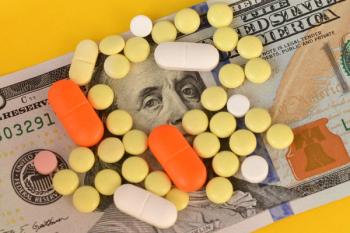
- Total Pharmacy® June 2023
- Volume 01
- Issue 03
Four Simple Steps to Turn a Pharmacy’s Front End Into a Profit Magnet
Filling prescriptions is no longer a sufficient source of revenue for community pharmacy.
Pharmacy owners know there is no shortage of individuals trying to help them run a more profitable business. Invitations to spend money on a new initiative, program, or device are plentiful.
Below is a 4-step plan that will help pharmacists improve their store’s profitability with little to no capital investment. At the center of this plan is the pharmacy’s front end. Every pharmacy—no matter its size or the number of prescriptions it fills—has one, and how it is managed can have a positive impact on the pharmacy department.
Look at the Front End as an Asset, Not a Liability
A well-stocked front end is well worth the effort. Using this space to create an attractive and professional image will help pharmacists build greater trust within their communities. Employees will take greater pride in their job, and patients will shop the entire store and be more willing to recommend your pharmacy to others. Prescribers will also be more inclined to collaborate and refer patients. Looks matter and neatness counts.
The best way to turn the front end around is to select a key staff member and put them in charge of it. Train them and then empower them to take ownership of this space. Allow them to work with vendors and buy products. Challenge them to train staff members on product benefits. Finally, incentivize them to grow your bottom line. Praise is great, but bonuses based on increased profits are more meaningful.
One of the first places for this newly minted front-end specialist to start is with the information in the pharmacy’s point-of-sale (POS) system. POS data can show patterns, highlight problems, and help pharmacy stakeholders make decisions on what products to stock, where to put them, and how to price them.
Every item that is likely to be reordered needs to be received into and sold out of the POS. Managing by the numbers is both an art and a science; just because an item is not selling briskly does not mean it needs to be dropped. Perhaps it needs to be moved to a new location, placed adjacent to other items, or repriced. The front end is like a jigsaw puzzle: All the pieces need to fit together to maximize sales per square foot.
Learn to distinguish gross profit percentage, gross profit dollars, and gross profit return on investment. Gross profit return on investment implies that a low-margin item with quick turnaround can often be the most profitable item on the shelf. Increase sales of high-margin items through promotions and use loss leaders to drive foot traffic. Always be on the lookout for new products that fit the image of the pharmacy.
Synergize and Harmonize
With staff, brainstorm new ways the pharmacy’s front end can be tied into the growing opportunity to provide enhanced and clinical care services. This may mean eliminating, enlarging, or rearranging front-end departments. The greeting cards section might best be turned into a consultation area.
Point-of-care testing equipment, computer terminals, and monitors need to be presented to patients in a professional atmosphere. These services provide the opportunity to generate nonprescription revenue, build on the pharmacist’s reputation as a health care expert, and provide oppor-tunities for physician collaboration.
Offering influenza, streptococcal pharyngitis, COVID-19, and other tests means that the front end should be stocked with fever reducers, probiotics and immune boosters. Properly displaying and recommending products with professionally produced marketing materials is a must. Clinically oriented programs such as diabetes education, weight loss programs, and smoking cessation are proven revenue generators. They also provide opportunities for recommending related products that are paid for by the patient.
Many successful pharmacies look for unique new products with a health care fl air. This works best when the products are supported by printed bro-chures and signage or personal recom-mendations from staff , because patients may not automatically understand how a specifi c product can help improve their lives. Classic examples include vitamins and nutritional supplements, and there is a growing opportunity in skin care products as well. (Remember, 100% of your clients have skin.)
Promote the Front End Inside and Out
The tips above are helpful, but simply stocking these products will not generate the buzz that pharmacists may want. Promotion is critical: Far too many pharmacy owners have invested in a professional-grade vitamin line only to see product sit on the shelf and expire. The good news, however, is that promotion does not need to be expensive.
Start with some creative thinking. Brainstorm some simple and creative ways to display products. Window banners, bag clippers, shelf danglers, and even “Ask Me” buttons work. Many pharmacies create shelf talkers with the picture of a pharmacist and an “I recommend…” statement.
Lean on vendors to provide proper signage, educational materials, and samples. Vendor-supported demonstration days are a proven winner and cost the pharmacy almost nothing. Use these resources to make the shopping experience more enjoyable. You can also use social media to educate and interact with patients while promoting product lines in an effective and inexpensive way. Check with product suppliers for digital content to facilitate these posts.
Pharmacists should also engage with the community and become the subject matter expert in their area. For example, a local pharmacy that stocks a particular brand of bottled hydration products could work with the high school athletic program that buys the product for the team to use during games. Another pharmacy could serve as the supplier of a line of nutritional products for a local nursing agency. In both cases, the support of the product by an outside organization will boost in-store sales.
Be Wise
Results from multiple surveys indicate that a nonprescription product recommendation by a pharmacist is accepted by the patient most of the time. Attaching front-end off erings to consultation services capitalizes on the pharmacist recommendation opportunity. When it comes to patient education, if the pharmacist and staff believe in the product efficacy, the whole team can feel comfortable making recommendations.
The world is full of nonprescription products with unproven claims that appeal to patients. Pharmacy owners should resist the urge to stock them; a pharmacist’s reputation as a trusted health care professional is too valuable to waste on a quick sale. Instead, pharmacists should find vendors that they and their employees can believe in. Challenge these vendors to help pharmacy team members understand the benefits they provide a patient.
Here’s the bottom line: The pharmacy front end is like a magnet. It can pull patients in or push them away. The economics of today’s community pharmacy require everyone on the team to understand that filling prescriptions is no longer a sufficient source of revenue. Creating an attractive, well-stocked, and profitable front end is no longer optional; it is essential for the pharmacy’s success.
Articles in this issue
over 2 years ago
DSCSA is Coming. Are you Ready?over 2 years ago
Technology Tools Can Improve Customer Serviceover 2 years ago
Creating and Leveraging Community Partnerships That Lastover 2 years ago
Pharmacists Find Marketing Success With Instagram, TikTokNewsletter
Pharmacy practice is always changing. Stay ahead of the curve with the Drug Topics newsletter and get the latest drug information, industry trends, and patient care tips.















































































































